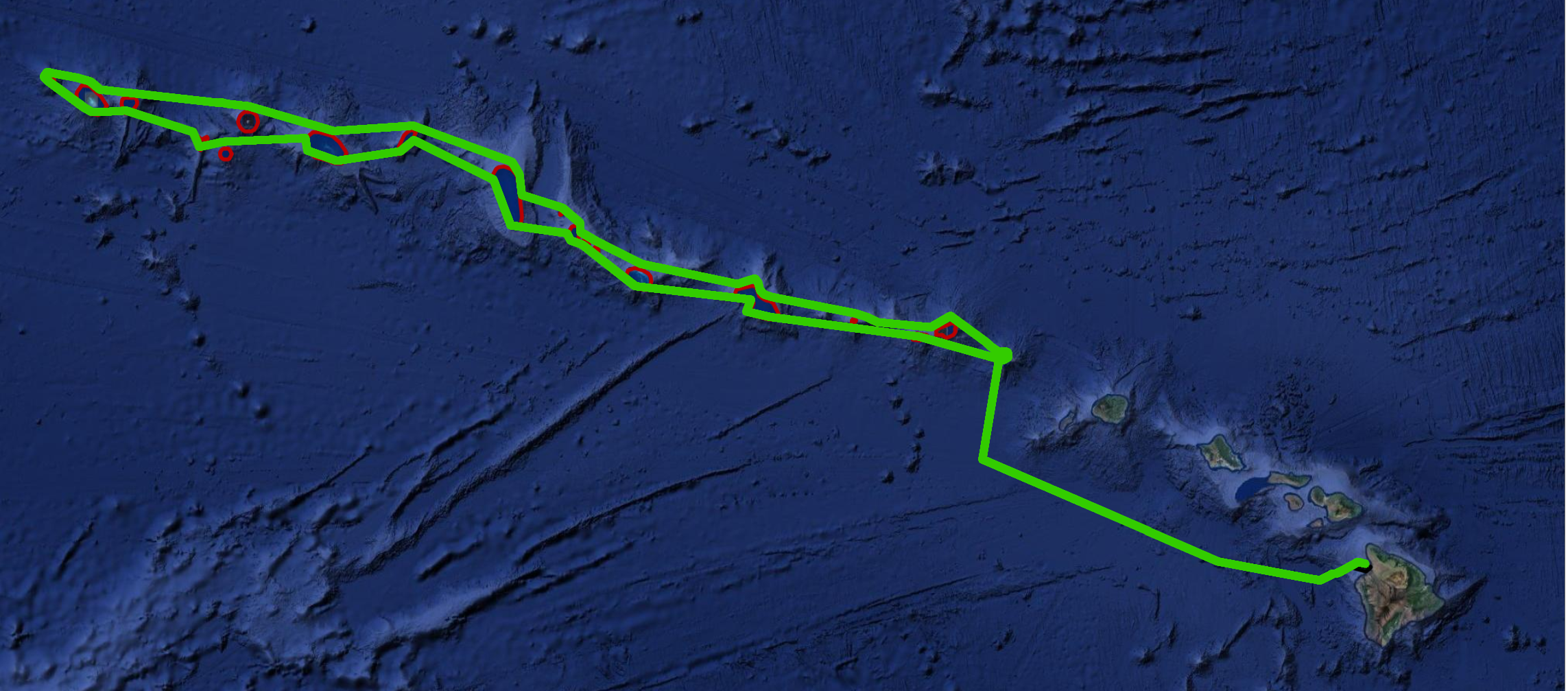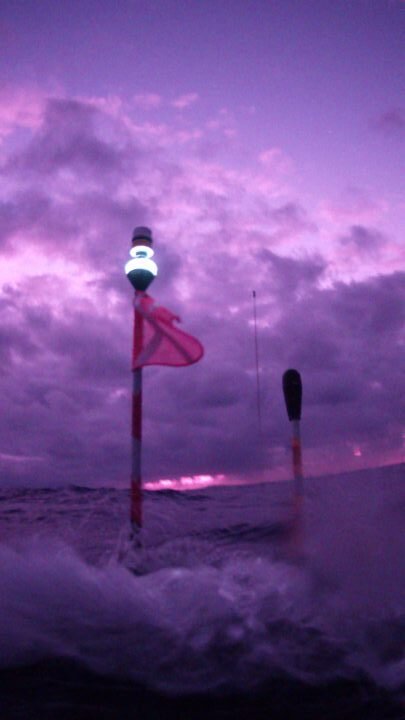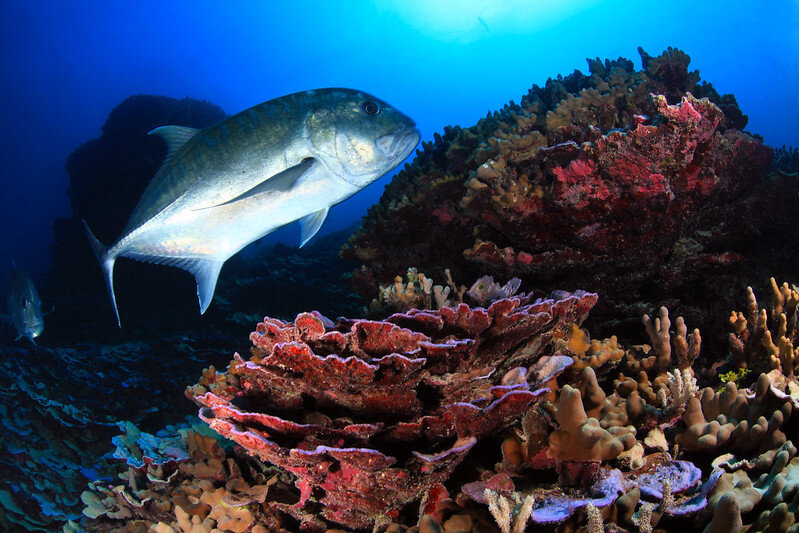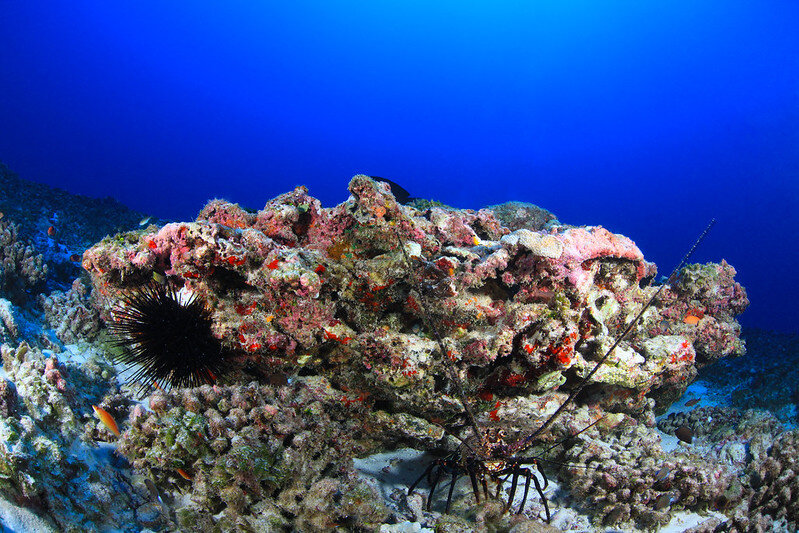Aloha,
It has certainly been a very trying year for us all. However, to top it off for Jupiter, the results of our HUMPACS West mission has been published in Marine Mammal Science. The full article can be viewed here. Enjoy!
HAPPY NEW YEAR!
Aloha,
It has certainly been a very trying year for us all. However, to top it off for Jupiter, the results of our HUMPACS West mission has been published in Marine Mammal Science. The full article can be viewed here. Enjoy!
HAPPY NEW YEAR!
For a look back at Europa's prior journeys, check out our MAP and the Sea Surface Temperature (SST).
Aloha!
Exciting News!
We have some very exciting news! On Dec 15th Jupiter launched Europa on another HUMPACS mission to explore the deep ocean basin between Hawai’i and the Revillagigedo Archipelago off Mexico. In the 2018 HUMPACS mission Europa went east of the Big Island and then veered northeast once midway across the ocean. This time we’re sending Europa to where we last heard whales in 2018 then straight across to Isla Clarion, Mexico.

Europa looking over the horizon to Mexico!

Europa ready for her next adventure!
Jupiter is again partnering with Dr. Jim Darling from Whale Trust and will be collaborating with Jorge Urbán Ramírez from PRIMMA/UABCS, México. Our hope is that this mission will help us fill in some pieces of the puzzle such as: were the humpbacks we detected in 2018 an aberration; is there an actual migration between Hawai’i and Mexico; or is there an offshore assembly of whales; and what are the outer boundaries are of humpbacks in relationship to their nearshore Hawai’i and Mexico breeding grounds?

Map showing Europa’s course to Isla Clarion, Mexico, with a bow north out to where humpback whales were heard in 2018.
One- way to Mexico is approximately 2250 NM.
And to top it off, last night as Europa was rounding South Point, Halema’uma’u erupted again. What a sendoff for Europa. Most people just do fireworks!

Europa’s course to date as she rounded South Point just as Halema’uma’u erupted
More to come in the New Year!
HAPPY HOLIDAYS!
MERRY CHRISTMAS!
MELE KALIKIMAKA!
FELIZ NAVIDAD!
For a look back at Europa's prior journeys, check out our MAP and the Sea Surface Temperature (SST).
Aloha!
Aloha everyone,
As 2020 comes to an end, we wanted to present the preliminary report by Dr. Marc Lammers of our Wave Glider Mission through the PMNM.
Have a safe and joyous holiday!
“November 6, 2020
Dr. Marc Lammers, Research Coordinator at NOAA's Hawaiian Islands Humpback Whale National Marine Sanctuary
This presentation describes recent fluctuations in the presence of humpback whales in Hawaiʻi over the past several years and the science being conducted to understand these trends. Dr. Marc Lammers discusses the application of novel tools to understand the occurrence of humpback whales in remote habitats, including the use of a Wave Glider and machine learning algorithms to detect the presence of whales in the Papahānaumokuākea Marine National Monument.
This presentation is part of the Kauai Ocean Discovery speaker series that is celebrating November, which is Ho`i Koholā (Return of Humpback Whale Month).”
Reference:
https://sanctuaries.noaa.gov/education/teachers/occurrence-humpback-whales-through-acoustics.html
For a look back at Europa's prior journeys, check out our MAP and the Sea Surface Temperature (SST).
Aloha!
Aloha everyone!
We thought you might enjoy the most recent episode of Whale Trust’s Humpback Chronicles (episode 30), produced by Flip Nicklin and starring our very own Beth Goodwin.
Beth gives a nice rundown of what a Wave Glider is, how it works, and some history of how we at Jupiter Research Foundation have used it to listen to, and detect, humpback whales.
She also tells the stories of our three HUMPACS missions, and the amazing results that came from each mission.
Then Beth gives insight into what the future might hold for continued missions down the road.
Enjoy!
For Whale Trust and Flip Nicklin’s entire library of Humpback Chronicles, click here.
Also, they welcome any questions that you might have. Send your questions to:
For a look back at Europa's prior journeys, check out our MAP and the Sea Surface Temperature (SST).
Aloha!
Below are two time lapse videos of Europa’s Voyage through The Papahānaumokuākea Marine National Monument. We had two cameras taking pictures from sunrise to sunset approximately every 1.5 to 3 hours.
The first video is from a camera mounted on the back end of the float. At the beginning of the journey you’ll see some ti leaves on the float. This was part of Europa’s blessing before embarking on her voyage through the PMNM. As you can see, Europa experienced some rough seas, beautiful sunrises and sunsets, full moons, and calm days with an occasional booby resting on the warm solar panels.
The second video is from a camera mounted in the float looking down at the sub and umbilical. You’ll note that the sub moves around quite a bit. There were times when the umbilical had slack and the wings were fully rotated up or down, indicating rough seas. Occasionally, fish even gathered around the sub.
Please enjoy the videos.
For a look back at Europa's prior journeys, check out our MAP and the Sea Surface Temperature (SST).
Aloha!
Europa has finally made it home and was safely recovered March 14th. This type of survey throughout the pristine Papahānaumokuākea Marine National Monument has been the first of its kind. We are very proud of the mission and collaboration with the Navy and NOAA Sanctuary. Thank you all for following Europa’s journey.

Europa’s course navigating outside of the 200’ depth contour (red circles) throughout the PMNM

Europa lays eyes on the Kohala Coast and Mauna Kea on the Big Island

Europa with view of Mauna Kea: Land Ho!

View of Europa from the May Maru

Europa, moments before recovery on the May Maru

Given the current Covid-19 pandemic, Europa follows appropriate bio-security protocol

She's not sure about coming to shore after her journey in the pristine, uninhabited, PMNM. Please stay safe!

Recovery crew: Beth, Maya, and Jessica (from left to right)
For a look back at Europa's prior journeys, check out our MAP and the Sea Surface Temperature (SST).
Aloha!
Europa is on her way home after successfully surveying The Papahānaumokuākea National Marine Monument. As she exited the monument, she concluded with a cross through, and circle around, Middle Bank.
We expect to recover her in Puako sometime in the next 5-7 days, but the journey is not over yet. For this last leg, Europa has been faced with strong winds and high seas, as well as had to dodge a number of cargo and passenger vessels.
Today, a passenger vessel from the Bahamas, headed to Oahu, passed behind her. The vessel’s name was Europa, a good omen we hope!
The entire team from Jupiter, NOAA and the Navy anxiously await her recovery.
Stay tuned!

Europa passing through, and then circling, Middle Bank at the end of her PMNM journey.

A look at all of the marine traffic that Europa is avoiding on her way back home to Puako. Each of those yellow and red dots represent a cluster of vessel breadcrumbs.

Europa vessel that passed by our wave glider Europa earlier today.

Sunrise from Europa in some heavy seas.

Moonrise (supermoon) from Europa with waves crashing.
For a look back at Europa's prior journeys, check out our MAP and the Sea Surface Temperature (SST).
Aloha!
Europa has been doing really well as she journeys along the north side of the chain, enduring calm and rough seas. We continue to hear whales and other cetaceans. Europa is half way down the chain and has 5-7 more days to go until she reaches Middle Bank. From there she will head back to the Big Island.
Not only has she been enjoying some beautiful sunrises, but she’s also swimming in some warmer water once again!
Check out the Sea Surface Temperature graph of her entire journey and then take a look and listen at the pictures and audio below as she approaches French Frigate Shoals.

Europa heading towards the sunrise

Europa getting some early morning cloud cover

Europa punching through some waves

Europa cruising an a beautiful day


Located approximately 150 kilometers (93 miles) northwest of Mokumanamana is French Frigate Shoals. This crescent-shaped atoll is roughly 19 kilometers wide and 28 kilometers long with 5 islets. The atoll has extensive near-shore reefs. French Frigate Shoals exhibits the classic features of a well-developed coral atoll. The coral growth is atop an eroded volcano, which has been submerged for millions of years. A steep-sided basalt pinnacle juts out of the water in the center of the atoll. This unique rock formation is the last remnant of the original volcano. The pinnacle was named "La Pérouse Pinnacle" after Compte de La Pérouse, who visited the atoll in 1786. In the moonlight the pinnacle so resembled a full-rigged sailing ship that it lured more than one vessel to her doom on the shoals as Captains investigated the unidentified companion.

Photo by: Pelika Andrade/UH Sea Grant, 2017
The Hawaiian name for French Frigate Shoals is Kānemiloha‘i; he was a brother of Pele, the fire goddess. The shallow, uncharted reefs proved dangerous for western sailors who voyaged across the Pacific during the 18th and 19th centuries. Many ships wrecked on these reefs and, to date, seventeen of these shipwreck sites have been discovered and documented by NOAA maritime archaeologists. French Frigate Shoals was claimed by the United States in 1859. Tern Island, was formed into a runway to serve as a refueling stop for planes enroute to Midway during World War II. The original seawall, runway, and some of the buildings remain. The U.S. Fish and Wildlife Service continues to maintain a field station there, which supports research for seasonal field camps of biologists monitoring Hawaiian monk seals and Hawaiian green turtles.

Photo by: Koa Matsuoka, 2015
French Frigate Shoals has one of the most significant reef systems in the Northwestern Hawaiian Islands. The 230,000-acre reef supports the greatest variety of coral species including the Acropora table coral, finger coral, and stony coral. There are also over 600 species of invertebrates such as sponges, coral worms, snails, lobster, crabs, shrimp clams, oysters, sea urchins, and sea stars, many of which are endemic (found only there) to the atoll. The outer reef waters support gray reef sharks, butterfly fish, and large schools of jacks and groupers. Endemic masked angelfish (Genicanthus personatus) are occasionally seen here at scuba diving depths. In the Main Hawaiian Islands, they are rarely seen shallower than 300 feet. Additionally the majority of the Hawaiian green turtle population (an estimated 96%) nests almost exclusively at French Frigate Shoals. Satellite tagging of these turtles indicates that most of them migrate to the Main Hawaiian Islands to feed and reach sexual maturity before returning to French Frigate Shoals to breed. Some of these turtles travel northwest to feed, while others travel as far south as Johnston Atoll. The atoll is also one of the six main breeding subpopulation sites for the endangered Hawaiian monk seal.
For a look back at Europa's prior journeys, check out our MAP and the Sea Surface Temperature (SST).
Aloha!
We are happy to report that we have continued to hear humpback whales and other species as we passed the North Hampton Seamounts and Neva Shoals at the very north end of our voyage. Of note, the Sea Surface Temperatures (SST) continued to drop. Last night we rounded the north end of Lisianski Island and are now officially headed back down the other side of the chain making our way back home. Below are some pictures from Europa, as well as a couple of audio files from her voyage to the north end of the chain.

A booby catching a ride on Europa

A beautiful sunset seen from Europa


Located 208 kilometers (129 miles) northwest from Laysan is the island commonly known as Lisianski. Another name for Lisianski is Papa‘āpoho. It is a combination of two words. Papa means a reef, flat surface, or foundation and ‘āpoho means depression, hollow, or pitted. Combined, they describe the depression between two tall sand dunes which may have once been the location of a lake similar to the one on Laysan.
About 20 million years ago, geologic forces raised the tip of a huge coral bank above sea level. Today, Lisianski Island is 1.5 square kilometers (381 acres), about the size of Honolulu. While its land mass is relatively small, Lisianski’s coral reef, known as Neva Shoals, is massive at 310,000 acres or 1,254.5 square kilometers, an area nearly the size of O‘ahu.
The first western explorer to reach the island was the Russian Captain Yuri Feodorovich Lisyansky in 1805. The captain ran aground in his ship, the Neva, after which the shoal to the south was named. Various ships visited Lisianski throughout the 1800s to harvest fish, turtles, guano, beche-de-mer (sea cucumbers), sharks, and seals. During this period rats and mice arrived on Lisianski in the 1800s as accidental introductions, and rabbits were purposely introduced by humans as a food source. These mammals consumed most of the vegetation and negatively impacted the terrestrial ecology. Captain John Paty claimed the island for the Kingdom of Hawai‘i on behalf of Kamehameha IV on May 10, 1857. In 1890, the North Pacific Phosphate and Fertilizer Company acquired a twenty-year lease to mine the island for guano. From 1904 to 1909 Japanese feather poachers harvested birds from the island. This activity was stopped after Lisianski became part of the Hawaiian Islands Bird Reservation in 1909.
Today, Hawaiian monk seals and green sea turtles are common visitors to Lisianski's sandy white beaches. Migratory shorebirds seen on the island include the kolea (golden plover), ulili (wandering tattler), and kioea (bristle-thighed curlew). Nearly three-fourths of the Bonin petrels nesting in Hawai’i make this island their home. In some years, more than a million sooty terns visit Lisianski.

Photo by: Greg McFall/NOAA Office of National Marine Sanctuaries, 2011
Coral and giant trevally / ulua aukea (Caranx ignobilis) at Lisianski Island in Papahānaumokuākea Marine National Monument.
Reef fishes of the nearshore waters are abundant and diverse. Researchers have found predators near Lisianski's reefs, such as sharks, to be very aggressive. Even ulua (Trevally jacks) will harass divers and small boats. The reefs of Lisianski and surrounding Neva Shoals are called "coral gardens" by some scientists because of their abundance of coral and the variety of growth forms assumed by their colonies, including structures resembling spires, castles, and a variety of other shapes.
For a look back at Europa's prior journeys, check out our MAP and the Sea Surface Temperature (SST).
Aloha!
Europa has endured some strong winds and high seas the last few days as a cold front has moved from west to east across the chain. The sea surface temperature has also dropped a bit as we keep heading NW. We were a bit nervous as Europa tracked close to Maro Reef in search of humpbacks. Previous research has indicated that humpback whales frequent the waters surrounding Maro Reef. Humpbacks at Raita Bank have not been previously reported, possibly due to limited survey effort. Europa’s survey has confirmed an abundance of singing humpbacks as well as other odontocetes around Maro Reef and we are happy to report that Europa heard a fair number of humpbacks off Raita Bank as well. Again, this shows the enormous potential autonomous vehicles could have for studying whales in remote areas.

Picture of Europa’s course over the last two days. The red lines demark the 200’ depth line. We have defined this as our “exclusion zone” or safety margin. Alarms will be sent to our piloting team should Europa cross the line. As you can see, she is traveling quite close to shallow waters!

There are approximately 30 submerged banks in the Northwestern Hawaiian Islands. Up until recently very little was known about the banks beyond that they were shield volcanoes formed at the hotspot. Some scientists believe that many of the banks act as ‘stepping stones’ for marine organisms to migrate in the region. The bank areas provide extensive habitat for bottomfish and a few are known to provide foraging habitat for endangered Hawaiian monk seals. Large precious corals, such as gold, pink and black are also found in the deep waters of the banks. Unlike shallow reef corals which are able to harness sunlight as an energy source due to photosynthesizing symbiotic dinoflagellates in their tissues, deep-water precious corals live in near-total darkness and are completely dependent upon capturing plankton from the water column with their tentacles.
Raita Bank is just west of Gardner Pinnacles. The crest, or top, of Raita Bank is about 60 feet from the ocean surface. Bottom habitats of relatively shallow banks such as Raita tend to be barren when compared with more sheltered coral reef environments. Recent surveys revealed less than 1% live coral cover in the shallow portions of Raita Bank, with the bottom scoured by wave action and strong currents. Raita is one of the larger banks in the NWHI, and there is much yet to be discovered about this area.
Maro Reef spans 50 kilometers in length and 30 kilometers in width. Maro Reef is almost completely submerged with very few areas above sea level. The Hawaiian name for Maro Reef is Nalukākala. This name, translated as wave (nalu) and surf comber; to form combers; to blow in gusts (kākala), references the rough seas encountered here.
Maro Reef was named for the Nantucket whaling ship Maro which was the first American whaler to cross the mid-Pacific. This atoll is a hazard for navigators because the lack of visible landmarks makes it difficult to avoid grounding a ship on shallow areas of the reef. On October 8, 1957, the oil tanker USNS Mission San Miguel ran aground while running at full speed and sank here.

Photo by: Greg McFall/NOAA Office of National Marine Sanctuaries
A banded spiny lobster / ula (Panulirus marginatus) and a black spiny urchin / wana (Echinothrix diadema) at Maro Reef in Papahānaumokuākea Marine National Monument.
Maro, or Nalukākala, has the largest extent of coral reef habitat in Papahānaumokuākea and is one of the most ecologically rich locales in the Northwestern Hawaiian Islands. The shallow waters consist of patch reefs and elongate structures called spur and groove formations. The reefs support numerous butterflyfish and surgeonfish species. Grey reef sharks, galapagos sharks, whitetip reef sharks, trevally, jacks, and other apex predators are also numerous. Sharks and other apex predators play an important role in maintaining balance within marine ecosystems by regulating the populations of other species lower in the food chain. In the Hawaiian culture, manō are honored as akua (gods) and ‘aumakua (family guardians).
For a look back at Europa's prior journeys, check out our MAP and the Sea Surface Temperature (SST).
Aloha!
© 2013-2023 Jupiter Research Foundation. All rights reserved. | Privacy Policy